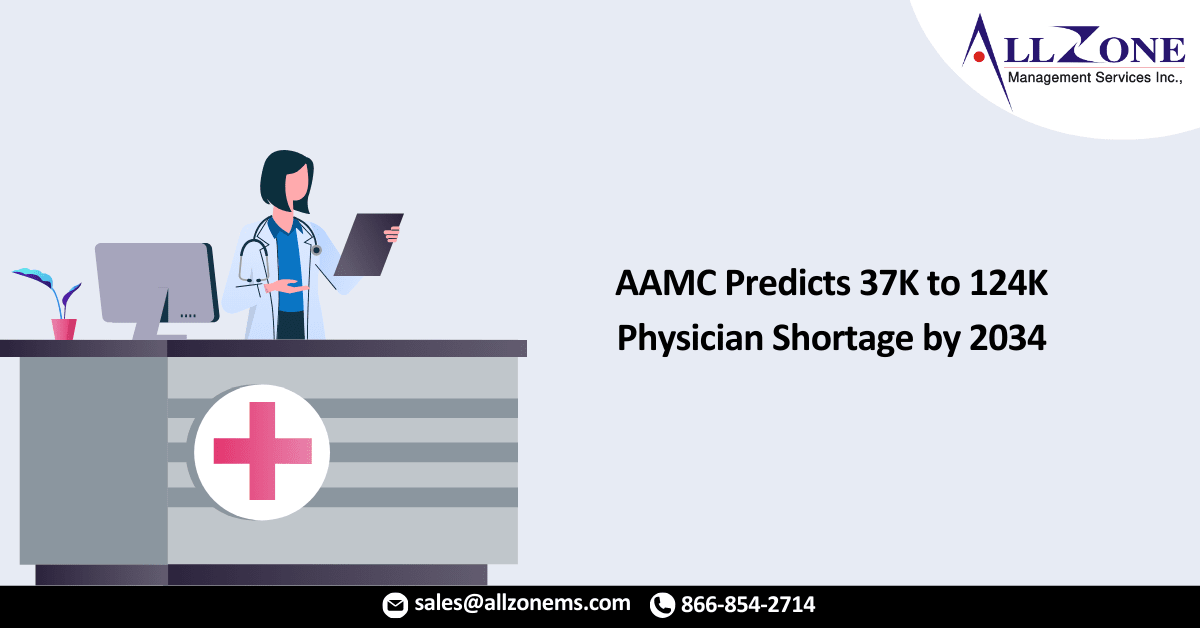The US could see a physician shortage of 37,800 to 124,000 doctors by 2034, including shortfalls in both primary and specialty care, according to the latest numbers from the Association of American Medical Colleges (AAMC).
Primary care will see a shortage of 17,800 to 48,000 physicians between 2019 and 2034, while specialty care is slated to see a shortage between 21,000 and 77,100 non-primary care physicians by the end of the period.
The projections released Friday spells serious trouble for the healthcare system still in the midst of recovering from the COVID-19 pandemic, says AAMC president and CEO David J. Skorton, MD.
“The COVID-19 pandemic has highlighted many of the deepest disparities in health and access to health care services and exposed vulnerabilities in the health care system,” Skorton said in a press release. “The pandemic also has underscored the vital role that physicians and other health care providers play in our nation’s health care infrastructure and the need to ensure we have enough physicians to meet America’s needs.”
Population growth, especially among older population groups, continues to drive demand for healthcare despite shortfalls in supply. The population of individuals 65 years and older is projected to increase by 42.4 percent between 2019 and 2034, outpacing general population growth at 10.6 percent during that period.
Demand for specialists that treat older patients and conditions prevalent in this population group will increase, AAMC reports. At the same time, the aging population will also likely spur a departure of physicians from the workforce as physicians reach retirement age.
More than two of every five active physicians in the US will be 65 years of older within the next decade, the report shows.
Physician labor supply will also be affected by the COVID-19 pandemic, including healthcare worker fatalities as well as the pandemic-induced recession and increasing rates of physician burnout, the report adds.
Separate date from the AAMC’s 2019 National Sample of Survey of Physicians found that 40 percent of the country’s practicing physicians felt burned out at least once a week prior to the COVID-19 pandemic.
Alleviating the physician shortage will be key to delivering high-quality care moving forward, especially as the healthcare system looks to address longstanding barriers to access to care, the report indicates.
For example, if marginalized minority populations, people living in rural communities, and people without health insurance had the same healthcare utilization patterns as populations facing fewer barriers to care, then the system would need an additional 180,400 physicians now, AAMC estimates.
The COVID-19 pandemic shone a light on the barriers marginalized minority populations face accessing quality care. Black Medicare patients were 5.5 times more likely to contract COVID-19 compared to White beneficiaries of the same gender even though Black patients were more likely adhere to 12 of the 15 COVID-19 safety guidelines, an Xtelligent Healthcare Media analysis showed.
“Addressing the physician shortage requires a multipronged solution that starts with educating and training enough physicians to meet America’s needs and includes improving access to care, diversifying the physician workforce, and ensuring our nation is prepared to address current and future public health crises,” Skorton said. “Now more than ever, the nation must make a long-term investment in the health care workforce. The time to act is now.”
AAMC pointed to recent legislation introduced in both the US House of Representatives and the Senate. The legislation titled the Resident Physician Shortage Reduction Act of 2021 seeks to increase the number of federally supported medical residency positions by 2,000 each year over a seven-year period.
The bill builds on a previous 1,000-slot increase Congress secured as part of the 2021 fiscal year omnibus year-end funding bill.
“The fact is, we were already facing a physician shortage crisis before the pandemic hit,” said Senator Bob Menendex (D-NJ), one of the Congress members to introduce the bill in March. “We will not be prepared to respond to a future public health crisis – let alone the health needs of an aging population – if we don’t act now to significantly increase the number of medical school students and physician residents in the training pipeline. Lifting this arbitrary cap would make a big difference in providing access quality health care in every community.”
For more information: https://revcycleintelligence.com/news/aamc-predicts-37k-to-124k-physician-shortage-by-2034

